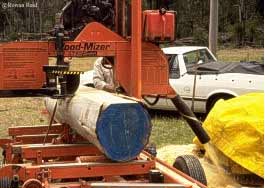|
|
|
Economics
of farm forestry

To make an informed investment decision for
a long-term project such as farm forestry, farmers must understand
the economic tools used to assess the viability of long-term
projects. Understanding these tools allows for:
• a farm forestry project to be evaluated and compared
with other investments, such as investing in the stock market
or building a new dam;
• assessment of a project’s cash flow;
• analysis of a project’s financial aspects;
• the economic risks to be highlighted from the start of
the project.
Some people argue that an economic analysis only reports on
a project’s monetary aspects. But it also allows farmers
to consider the financial costs and returns against non-economic
benefits including aesthetics, providing wildlife habitats,
reducing erosion and salinity control. Some farmers might for
example accept a lower return from a less profitable option
(such as using native species instead of exotics) because of
the non-commercial value they place on the biodiversity and
aesthetic benefits. In these circumstances an economic analysis
can be used to assess the costs associated with providing desired
non-commercial benefits.
A farm forestry project’s true worth might be greatly underestimated
if only a financial analysis is undertaken. Financial analysis
is one of several tools to help in decision-making. Before making
any commitment, farmers should also consider the social and
environmental benefits, risks and uncertainties associated with
the project.
Financial cash
flow analysis: the good, the bad and the ugly
Back to top
|
|
